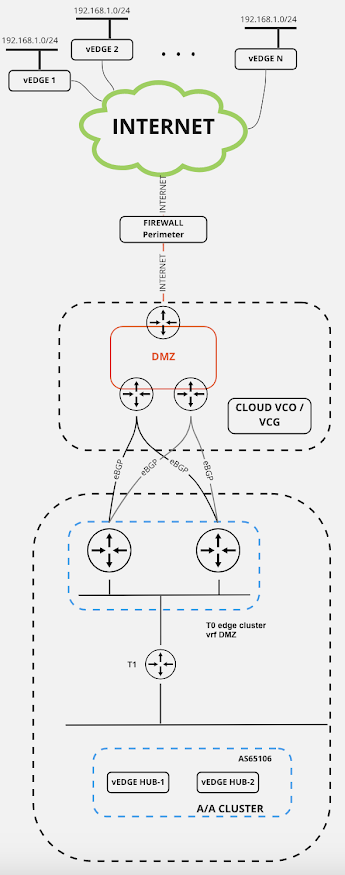NSX-T Layer 2 bridging - scenarios & use cases
Layer 2 bridging is very useful feature of NSX-T, which provides connection to a VLAN backed port group or a device, such as a gateway, that resides outside of NSX-T DC environment. Useful scenarios, among others, are:
- Workload migration from VLAN-backed to NSX overlay segment,
- NSX-V to NSX-T migration in Customer environments,
- Security features leverage using NSX-T Gateway firewall etc.
L2 bridging feature requires usage of Edge clusters and Edge Bridge profiles.
Deployments should consider different options, with most important scenarios, for implementation below (this covers Edge VM deployment option as typical use case):
- Edge VM on VSS portgroup --> promiscuous and forged transmit on portgroup REQUIRED / ESXi host (with Edge VM) command "esxcli system settings advanced set -o /Net/ReversePathFwdCheckPromisc -i 1" REQUIRED / Active and Standby Edge VMs should be on different hosts,
- Edge VM on VDS 6.6 (or later) portgroup --> Enable MAC learning with the option "Allow Unicast Flooding" on the portgroup using VIM API DVSMacLearningPolicy and setting allowUnicastFlooding to TRUE,
- Edge VM on VDS 6.5 (or later) portgroup --> same setup like in first option (VSS portgroup),
- Edge VM on NSX-T segment --> new segment MAC discovery profile with MAC Learning and Unknown Unicast Flooding ENABLED / attach created segment profile to uplink segment used by Edge node VM
- Don't forget to configure required bridge profile on your edge nodes, with attaching that profile to overlay segment inside NSX which you're bridging for specific VLAN.
Regarding useful setup picture for testing/lab-ing purposes - something like this should help:


Comments
Post a Comment